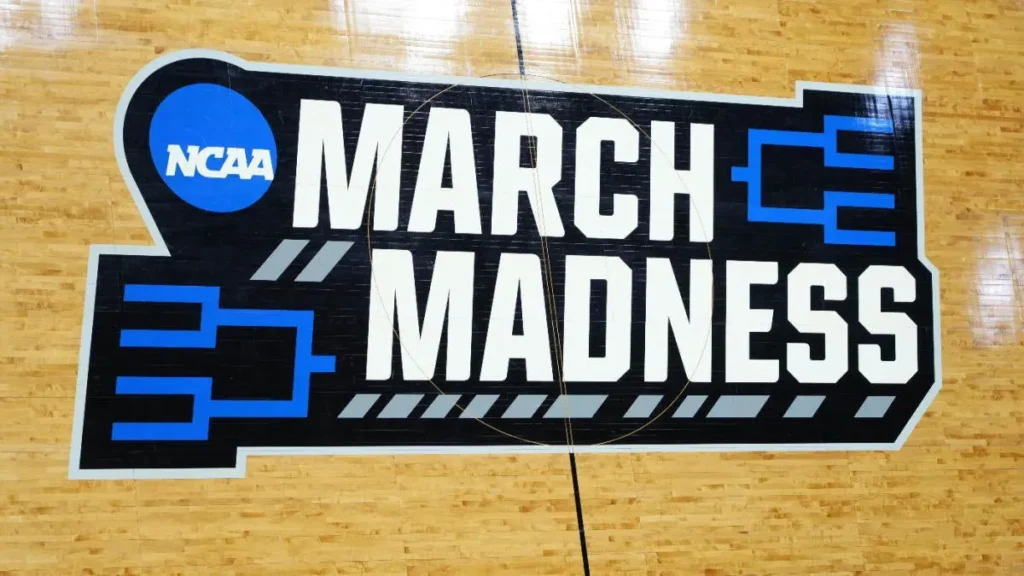Table of Contents
Introduction
The NCAA is considering some major changes to its tournament formats, and if you’re a fan of college sports, this is big news! The organization that brings us the thrilling March Madness and other exciting college championships is looking at ways to make these tournaments even more spectacular.
So, what’s on the table? The NCAA is pitching several models for expanding its tournaments. This means there could be more teams, new stages, or even different ways of organizing the games. But why does this matter to you? Well, these changes could mean more games to watch, more opportunities for your favorite teams to shine, and potentially more excitement in the tournaments you already love.
Think about it: more teams might mean a bigger mix of competition, and new stages could create even more thrilling moments. Of course, these changes come with their own set of challenges, too. We’re talking about everything from how to fit all these games into an already packed schedule to making sure the quality of the competition stays top-notch.
In this report, we’ll dive into the NCAA’s proposals, break down what each model might look like, and explore how these changes could impact fans, teams, and the tournaments themselves. Whether you’re a die-hard sports enthusiast or just someone who enjoys the occasional game, understanding these potential changes will give you a peek into how the future of college sports might unfold. Stay tuned as we unravel the possibilities and what they could mean for your game-watching experience!
Background on NCAA Tournaments
Current Tournament Structure
To really understand the NCAA’s proposals for expanding its tournaments, it helps to know how things work right now. Let’s start with basketball, the sport that brings us the iconic March Madness. The NCAA basketball tournament features 68 teams competing in a single-elimination format. That means every game is do-or-die: lose, and you’re out. The excitement builds as teams face off in a series of intense games, culminating in the crowning of a national champion.

When it comes to football, particularly in the Division I Football Bowl Subdivision (FBS), the structure is a bit different. Instead of a single-elimination format, teams are ranked throughout the season. The top-ranked teams are invited to participate in bowl games. The winners of these bowl games advance to the College Football Playoff (CFP), where they have a chance to compete for the national title. This format allows for a bit more flexibility and multiple opportunities for teams to showcase their skills.
Historical Context
Understanding the history of NCAA tournaments can shed light on why expansion is being considered now. Over the years, there have been several changes to how tournaments are structured. From adding more teams to altering game formats, these shifts reflect the NCAA’s efforts to keep up with the growing popularity of college sports and the desire for more inclusive and exciting competitions.
Key moments in tournament history include the introduction of the CFP in football, which aimed to create a more definitive national champion, and the expansion of the basketball tournament field from 64 to 68 teams to accommodate more schools. These changes have helped shape the current formats and set the stage for the latest proposals.
Proposed Expansion Models
Increase in Team Count
One of the main proposals on the table is increasing the number of teams in the tournaments. This idea aims to broaden the field and give more teams a shot at glory.
Overview of the Model The plan is to add more teams to the current tournament formats. For basketball, this could mean expanding beyond the existing 68 teams. For football, it might involve increasing the number of teams in the College Football Playoff or bowl games. The goal here is to include more schools and create a bigger, more diverse competition.
Potential Benefits Adding more teams could lead to a more exciting tournament experience. With more teams competing, fans get to see a wider range of matchups and underdog stories. This could also boost the visibility and participation of smaller programs that don’t always get a chance to shine on the national stage.
Challenges and Criticisms However, more teams also come with potential downsides. There are concerns that expanding too much could dilute the quality of competition. Additionally, adding more games means more logistical and financial challenges, both for the NCAA and the participating teams.
Introduction of New Tournament Stages
Another proposed model involves introducing new stages or rounds into the tournament structure. This could change how teams progress through the competition and could add extra layers of excitement.
Overview of the Model The idea here is to insert additional rounds or stages into the current tournament formats. For example, in basketball, there could be preliminary rounds before the main bracket begins, or in football, there could be new levels of playoff games. This would create more opportunities for teams to compete and advance.
Potential Benefits New stages could make the tournaments even more thrilling. Fans would get to see more games and potentially more dramatic upsets. It could also provide more opportunities for teams to showcase their skills and improve their chances of making it to the final rounds.
Challenges and Criticisms The main challenges with this model include the complexity of scheduling and the risk of extending the tournament duration. Longer tournaments might lead to increased fatigue for players and logistical issues for teams and organizers.
Regional or Conference-Based Tournaments
The third proposal suggests introducing regional or conference-based preliminary tournaments. This model focuses on adding more localized competitions before the national tournaments.
Overview of the Model This approach would create preliminary tournaments within specific regions or conferences. Teams would compete in these smaller, localized tournaments to qualify for the national stage. It’s a way to give more teams a chance to compete and potentially make it to the big stage.
Potential Benefits Regional or conference-based tournaments could generate more local excitement and fan engagement. They would also allow teams to compete on a more manageable scale before facing national competition. This could lead to a more dynamic and inclusive tournament experience.
Challenges and Criticisms However, this model could bring increased travel and logistical challenges. There’s also the risk that regional tournaments might overshadow the national competition or lead to disparities in the level of competition between regions.

Stakeholder Reactions
Coaches and Teams
When it comes to tournament changes, coaches and players are at the heart of the conversation. Their perspectives are crucial in understanding how these proposals might impact the day-to-day realities of college sports.
Support and Concerns Coaches and players have a mix of reactions to the proposed expansion models. Some see the potential benefits, such as more opportunities for teams to compete and possibly secure a spot in the national spotlight. They argue that adding more teams could give underrepresented programs a chance to prove themselves on a larger stage. However, there are also concerns about the impact on team preparation and the increased pressure of a longer tournament. Coaches worry that more teams might lead to logistical headaches and additional strain on players, who already deal with demanding schedules.
Fans and Media
Fans and media play a big role in shaping the public’s perception of tournament changes. Their feedback can influence how the proposals are received and whether they get the green light.
Public Opinion Fans are generally excited about the prospect of expanded tournaments. More teams mean more games and potentially more exciting matchups, which could enhance the overall viewing experience. Media coverage often reflects this enthusiasm, highlighting the potential for dramatic upsets and more diverse team representation. However, there are also concerns that expanding the tournaments might dilute the excitement of the “winner-takes-all” moments that make college sports so thrilling. Media commentators and fans alike debate whether the changes will improve the sport or simply add unnecessary complexity.
NCAA Officials and Decision-Makers
The NCAA’s decision-makers are the ones driving these proposals, and their statements provide insight into the motivations behind the changes.
Statements and Justifications NCAA officials argue that expanding the tournaments aligns with their mission to enhance the inclusivity and competitiveness of college sports. They point out that more teams mean more schools get to participate in the national conversation, which can boost overall interest and engagement. The officials emphasize that the proposals are designed to make the tournaments more exciting and accessible. They also address concerns by suggesting that the expansion models include plans to manage the increased complexity and maintain the quality of competition.
Impact Analysis
Financial Implications
Understanding the financial impact of the proposed tournament expansions is crucial for grasping how these changes might play out. Expanding tournaments involves more than just adding extra games; it has significant financial consequences for everyone involved.
Cost Considerations Adding more teams and games can lead to higher costs for teams, schools, and the NCAA itself. For schools, this means additional expenses for travel, accommodations, and game-day operations. The NCAA will also need to invest in logistics to handle the expanded format. However, the flip side is potential revenue increases. More games could mean more ticket sales, higher viewership, and increased advertising and sponsorship opportunities. It’s a balancing act between the extra costs and the potential for greater financial gains.
Competitive Balance
The effect of expansion on competitive balance is a key concern. Adding more teams and stages could change the dynamics of the tournaments in various ways.
Effect on Team Dynamics Introducing more teams into the tournament mix might shift the competitive balance. On one hand, it could lead to a more diverse range of teams competing, which might increase the overall excitement and unpredictability of the tournaments. On the other hand, there’s a risk that the quality of competition could suffer if too many teams are added. The challenge will be ensuring that the expanded tournaments still maintain a high standard of play and that all participating teams have a fair chance to compete effectively.
Fan Experience
The fan experience is a major consideration in the discussion about tournament expansions. After all, the primary goal is to enhance the enjoyment and engagement of fans.
Engagement and Viewership Expanding the tournaments could lead to a more engaging experience for fans. With more games and teams, fans have more opportunities to watch their favorite teams and follow new storylines throughout the tournament. This could boost overall viewership and create a more immersive experience.
However, there’s a risk that the excitement of each individual game could be diluted if the tournament becomes too lengthy or complex. Balancing the quantity of games with the quality of the viewing experience will be crucial to keeping fans hooked.

Next Steps
Implementation Timeline
As the NCAA considers expanding its tournaments, understanding the timeline for these changes is important for everyone involved. Implementing new formats and models requires careful planning and coordination.
Potential Timeline If the expansion models are approved, the next step will be to create a detailed implementation plan. This plan will outline how and when the new formats will be rolled out. Typically, such changes might be introduced over a few seasons to allow teams, schools, and fans to adjust. Initial phases could involve pilot programs or limited trials to test the new formats before a full rollout. The exact timeline will depend on various factors, including the complexity of the changes and the feedback received from stakeholders.
Key Milestones Key milestones in the implementation process will include finalizing the models, securing necessary approvals, and communicating the changes to all affected parties. The NCAA will need to work closely with teams, conferences, and broadcasters to ensure a smooth transition. Important dates might include announcements of new formats, scheduling details, and updates on any trial runs or pilot programs.
Further Discussions and Votes
Before any new tournament models become a reality, there will be additional discussions and votes. These steps are crucial for finalizing the changes and addressing any lingering concerns.
Upcoming Meetings and Votes The NCAA will likely hold meetings with various committees, teams, and other stakeholders to discuss the proposed changes in detail. These meetings will provide a platform for addressing questions, gathering feedback, and making any necessary adjustments to the models. Following these discussions, formal votes will be held to decide whether the proposed expansions will be approved and implemented.
Additional Feedback and Revisions As the process moves forward, there may be opportunities for further feedback and revisions. The NCAA might incorporate suggestions from stakeholders to refine the proposals and ensure they meet the needs of all parties involved. This iterative process helps to address any potential issues and make adjustments before the final implementation.
Conclusion
In wrapping up our exploration of the NCAA’s proposed tournament expansions, it’s clear that these changes could reshape the landscape of college sports. The NCAA is exploring several models to make tournaments more inclusive and exciting, from increasing the number of teams to introducing new stages and regional competitions.
Summary of Key Points
Expanding the tournaments could offer more opportunities for teams and players, potentially leading to more thrilling games and a broader range of competition. While the idea of adding more teams or stages might enhance the fan experience and bring more excitement to the tournaments, it also comes with challenges, such as managing increased costs, maintaining competitive balance, and ensuring a high-quality viewing experience.
Future of NCAA Tournaments
Looking ahead, the NCAA will need to carefully balance the benefits of expansion with the practical implications. The success of these changes will depend on how well they are implemented and whether they can deliver on their promise of a more engaging and inclusive tournament experience. Fans, teams, and stakeholders will all play a role in shaping the future of these tournaments, and their feedback will be crucial in refining and finalizing the expansion models.
Implications for College Sports
The potential changes to NCAA tournaments could have a lasting impact on college sports. By increasing access and creating new opportunities, these expansions could elevate the profile of college athletics and bring more excitement to the sports we love. As we wait for further developments, it’s an exciting time for college sports enthusiasts who are eager to see how these proposals will transform the tournaments and the experiences they offer.




